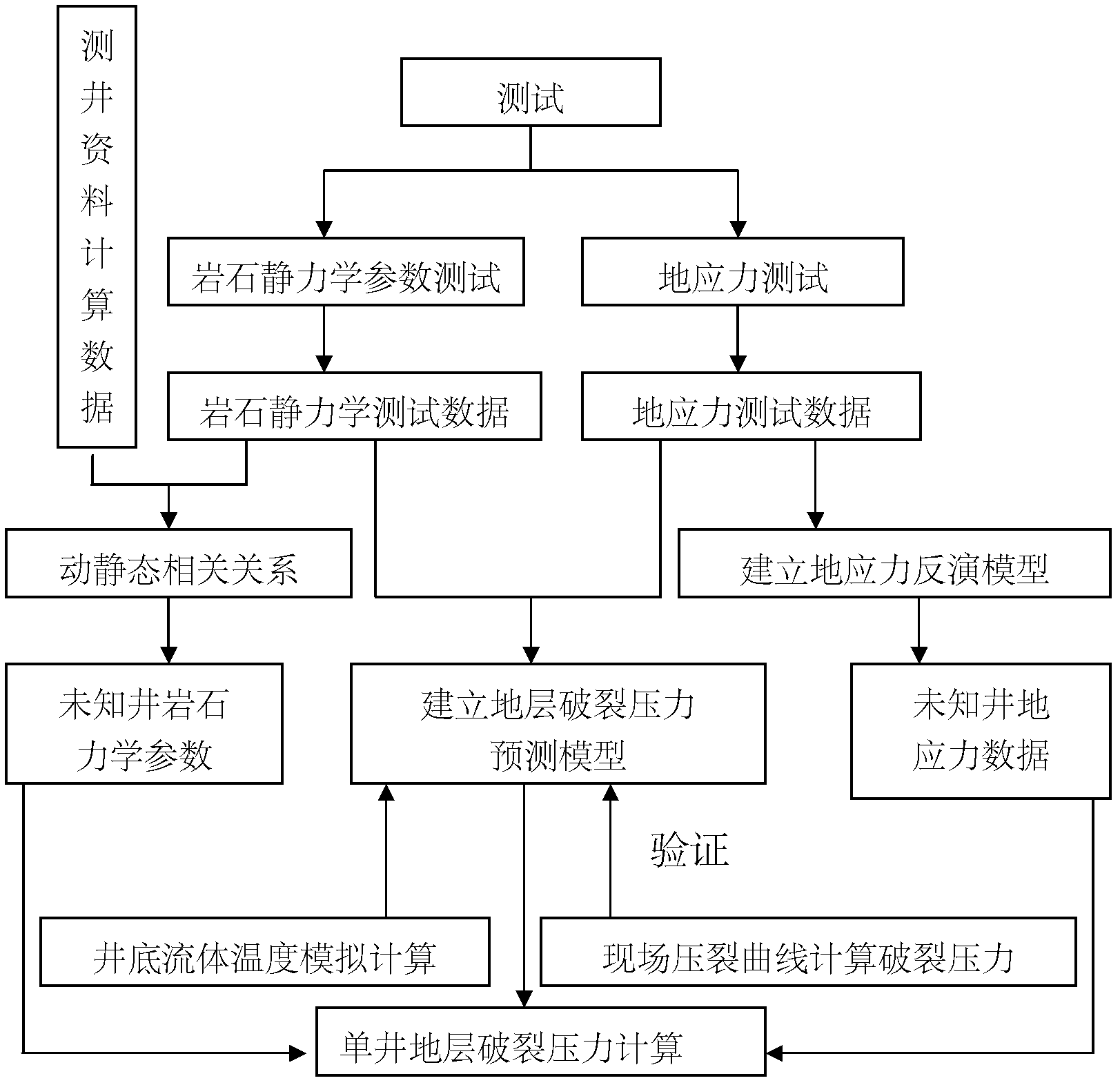Method for calculating fracture pressure of ultra deep well formations
A fracturing pressure, ultra-deep well technology, applied in earth-moving drilling, wellbore/well components, measurement, etc., can solve problems such as failure to accurately predict ultra-deep formation fracturing pressure and unsatisfactory prediction accuracy, etc. To achieve the effect of improving the calculation accuracy
- Summary
- Abstract
- Description
- Claims
- Application Information
AI Technical Summary
Problems solved by technology
Method used
Image
Examples
Embodiment 1
[0055] According to the well logging curve of Well TP7 in the Tuofutai block of Tahe River, the dynamic elastic modulus of the 6549m reservoir is calculated to be 72.153GPa, and the dynamic Poisson's ratio is 0.287. The static elastic modulus of the reservoir is calculated by the dynamic and static correlation formulas of rock mechanics parameters to be 46.57GPa, and the static Poisson's ratio is 0.272. Through the inversion model of in-situ stress, the maximum and minimum horizontal principal stresses of the reservoir are calculated to be 134MPa and 105MPa, respectively. Using software analysis, it is calculated that the temperature of the liquid when it reaches the reservoir is 85.7°C.
[0056] Based on these data, using the above formula, it can be obtained that when T7 is at a depth of 6549m, the fracture pressure of the formation is 113.3MPa, and the fracture pressure value measured according to the field construction curve is 109.6MPa, and the error between the two is 3....
Embodiment 2
[0060] According to the well logging curve of Well TP17 in the Tuofutai block of Tahe River, it is calculated that the dynamic elastic modulus of the 6844.4m reservoir is 71.909GPa, and the dynamic Poisson's ratio is 0.293. The static elastic modulus of the reservoir is calculated by the dynamic and static correlation formulas of rock mechanics parameters to be 46.112GPa, and the static Poisson's ratio is 0.282. Through the inversion model of in-situ stress, the maximum and minimum horizontal principal stresses of the reservoir are calculated to be 126MPa and 95MPa, respectively. Using software analysis, it is calculated that the temperature of the liquid when it reaches the reservoir is 89.2°C.
[0061] Based on these data, using the above formula, it can be obtained that the fracture pressure of TP17 at the depth of 6844.4m is 102.5MPa. The rupture pressure value measured according to the field construction curve is 109.2MPa, and the error between the two is 4.58%.
PUM
| Property | Measurement | Unit |
|---|---|---|
| Dynamic modulus of elasticity | aaaaa | aaaaa |
| Burst pressure | aaaaa | aaaaa |
| Dynamic modulus of elasticity | aaaaa | aaaaa |
Abstract
Description
Claims
Application Information
 Login to View More
Login to View More - R&D
- Intellectual Property
- Life Sciences
- Materials
- Tech Scout
- Unparalleled Data Quality
- Higher Quality Content
- 60% Fewer Hallucinations
Browse by: Latest US Patents, China's latest patents, Technical Efficacy Thesaurus, Application Domain, Technology Topic, Popular Technical Reports.
© 2025 PatSnap. All rights reserved.Legal|Privacy policy|Modern Slavery Act Transparency Statement|Sitemap|About US| Contact US: help@patsnap.com



